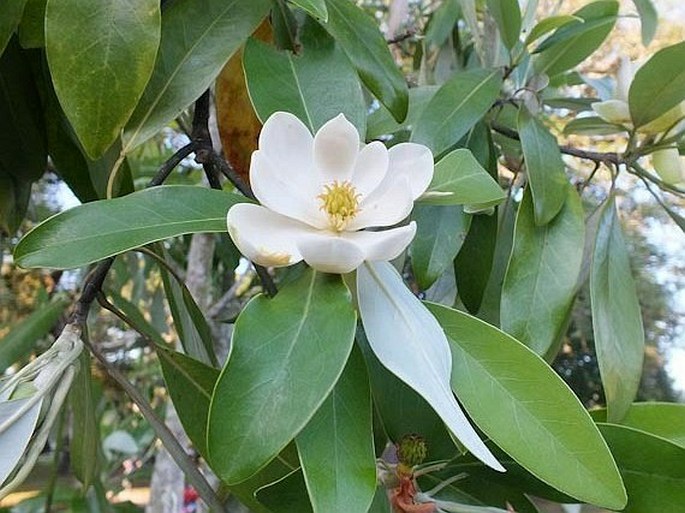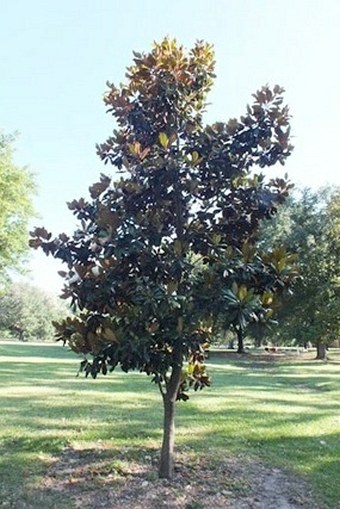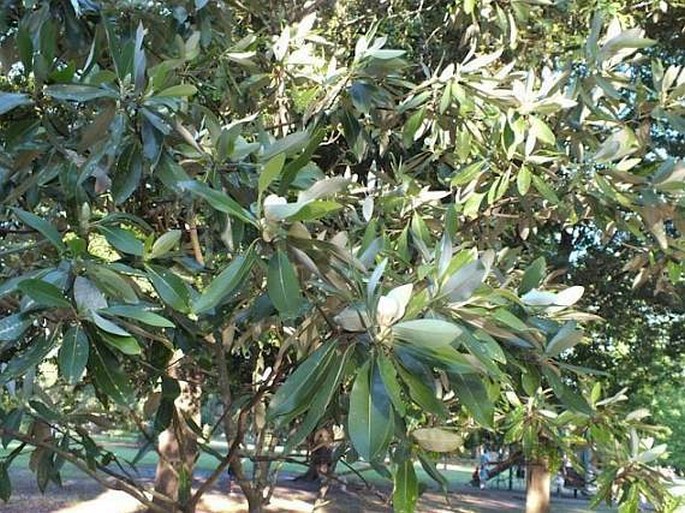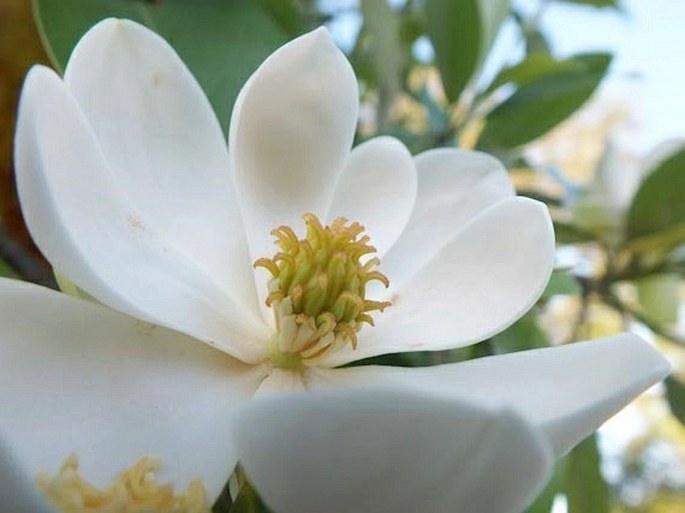Syn.: Magnolia australis Ashe, Magnolia fragrans Raf., Magnolia glauca (L.) L.
Family: Magnoliaceae Juss.


Distribution: Species of south east of US, from Massachusetts to Florida (incl. Virginia), and westward to Texas. Most widely distributed Magnolia of the continent. It occurs in 2 forms: deciduous and often multitrunked in the north, and typically single-trunked and evergreen in its southern range, with some integradation in between the ranges.
Ecology: Swamps, bays, wet woodlands and savannah, mainly on coastal plain and lower hills, at elevations to 500 m. Flowering in spring.
Description: Shrub or small tree, evergreen to partly evergreen to deciduous, multitrunked to 10 m, single-trunked to 28 m. Bark dark grey, smooth. Twigs and leaf buds pubescent, sometimes glabrous. Leaves alternate, petiolate, with stipules, red-glandular, leaf oblong to elliptic, ovate to obovate, 6–22 × 2.5–7 cm, leathery, apex obtuse to acute or rounded, lower side white to glaucous or densely pubescent, upper side dull green to lustrous. Flowers fragrant, 5–8 cm across, spathaceous bracts 2, red-glandular; tepals creamy white, red glandular, outermost segments reflexed, greenish, stamens 35–100, 5.5–11 mm long; filaments white; pistils 10–50. Fruit (follicetum) ellipsoid to globose, 2–5.5 × 1.5–3 cm, follicles short-beaked, glabrous; seeds globose to lenticular, 5 mm, aril red.
Threat and protection: Protected in states of New York, Massachusetts, Pennsylvania and Tennessee.
Use: Widely cultivated tree. First Magnolia known in Europe, dating from 1688 in England, nowadays widely hybridized. Native tribes used leaves, twigs and bark for a decoction to treat colds and as a hallucinogen.


These images were taken in USA, Louisiana, New Orleans (May 2014).


